Berberine + Ceylon Cinnamon: Why This Pairing Works
High-trust buyer’s-guide-style piece that teaches readers exactly how to evaluate quality and avoid common pitfalls.
By Supplement Reports Team
August 29, 2025
14 min read

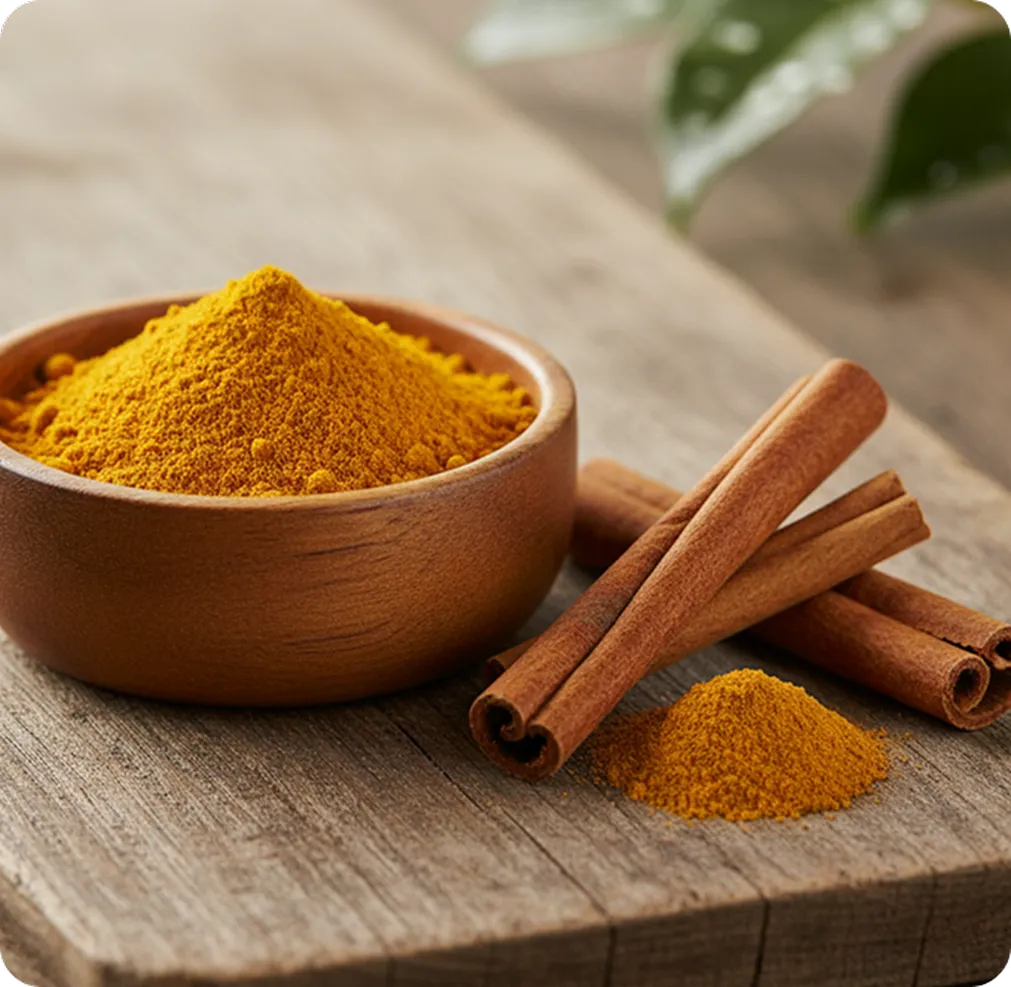
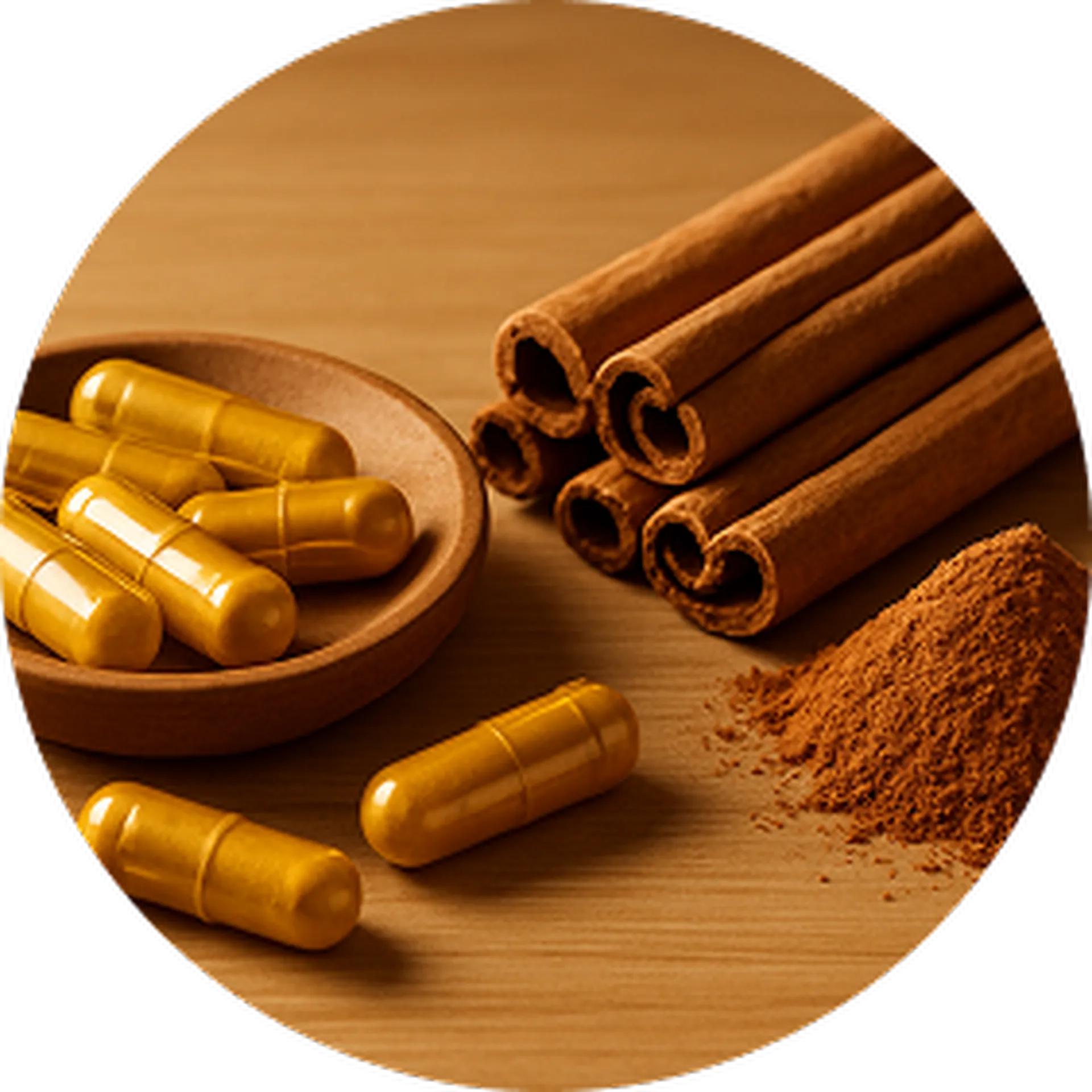
Quick Take

discuss quality considerations, and provide practical guidance for incorporating this dynamic duo into your health regimen—all while maintaining realistic expectations and emphasizing the importance of a holistic approach to metabolic wellness.
The combination of berberine and Ceylon cinnamon represents more than just another supplement trend—it’s a thoughtfully researched pairing that addresses metabolic health from multiple angles. While berberine activates cellular energy pathways through AMPK stimulation, Ceylon cinnamon enhances insulin sensitivity and glucose transport through complementary mechanisms. Together, they create a synergistic effect that may be more beneficial than either compound alone, particularly when integrated into a foundation of healthy eating and regular physical activity.
Meet the Ingredients: A Deep Dive into Two Metabolic Powerhouses

The historical use of berberine-containing plants spans thousands of years across multiple traditional medicine systems. In Traditional Chinese Medicine (TCM), Coptis chinensis has been used for over 3,000 years, primarily for what TCM practitioners describe as ‘clearing heat and dampness’—conditions that modern research suggests may correlate with metabolic dysfunction and inflammation. Similarly, in Ayurvedic medicine, berberine-rich plants like Berberis aristata (Indian barberry) have been employed for supporting digestive health and maintaining balanced energy levels.
From a biochemical perspective, berberine’s unique molecular structure allows it to interact with multiple cellular pathways simultaneously. Its ability to cross cell membranes and accumulate in mitochondria—the cellular powerhouses responsible for energy production—makes it particularly effective at influencing metabolic processes. The compound’s distinctive yellow color comes from its conjugated ring system, which also contributes to its biological activity.
Ceylon cinnamon (Cinnamomum verum), often called ‘true cinnamon,’ represents the gold standard for therapeutic use. Native to Sri Lanka (formerly Ceylon, hence the name), this variety has been prized for centuries not only for its delicate, sweet flavor profile but also for its superior safety profile when used regularly. The bark of Ceylon cinnamon trees naturally forms thin, papery layers that curl into delicate quills when dried, creating the characteristic light brown, multi-layered cinnamon sticks that are prized by both culinary enthusiasts and health-conscious consumers.
The critical difference between Ceylon and Cassia cinnamon lies in their coumarin content. Ceylon cinnamon contains only trace amounts of coumarin (typically 0.004% or less), while Cassia varieties can contain 0.4-0.8% coumarin—up to 200 times higher than Ceylon cinnamon. This difference becomes particularly important for individuals who plan to use cinnamon as a daily supplement, as European food safety authorities have established tolerable daily intake levels for coumarin due to concerns about potential liver effects with chronic exposure.
The Science of Synergy: How These Compounds Work Together

Berberine’s primary mechanism involves the activation of AMPK (AMP-activated protein kinase), a crucial enzyme that acts as a cellular energy sensor. When AMPK is activated, it triggers a cascade of metabolic changes designed to optimize energy utilization. This includes increasing glucose uptake by muscle cells, enhancing insulin sensitivity, promoting the breakdown of fatty acids for energy, and inhibiting the synthesis of cholesterol and fatty acids when energy stores are adequate.
The AMPK pathway is particularly important because it represents the body’s natural response to energy demands. During exercise, for example, AMPK activation helps muscles take up glucose more efficiently and burn fat for fuel. Berberine essentially mimics some of these exercise-induced metabolic benefits at the cellular level, which is why some researchers have dubbed it an ‘exercise mimetic.’
Ceylon cinnamon works through different but complementary pathways. Its bioactive compounds, particularly cinnamaldehyde and various polyphenols, appear to enhance insulin signaling and improve the efficiency of glucose transport into cells. Research suggests that cinnamon compounds may help optimize the function of insulin receptors and glucose transporters, making cells more responsive to insulin’s signals.
Ceylon Cinnamon's Complementary Mechanisms

The polyphenolic compounds in Ceylon cinnamon, including proanthocyanidins and catechins, also provide antioxidant support that may help protect cells from oxidative stress associated with metabolic processes. This antioxidant activity works synergistically with berberine’s metabolic effects, potentially supporting overall cellular health and function.
Research has shown that cinnamon extracts can influence the activity of key enzymes involved in carbohydrate digestion, potentially slowing the breakdown of complex carbohydrates into simple sugars. This enzymatic modulation can contribute to more gradual glucose absorption, reducing the metabolic burden on insulin-producing cells and complementing berberine’s insulin-sensitizing effects.
The combination of these mechanisms creates a multi-faceted approach to metabolic support. While berberine works primarily at the cellular level to enhance energy utilization and insulin sensitivity, Ceylon cinnamon addresses glucose metabolism from the digestive and absorption perspectives, creating a comprehensive support system for healthy metabolic function.
Building Your Foundation: Diet and Lifestyle First
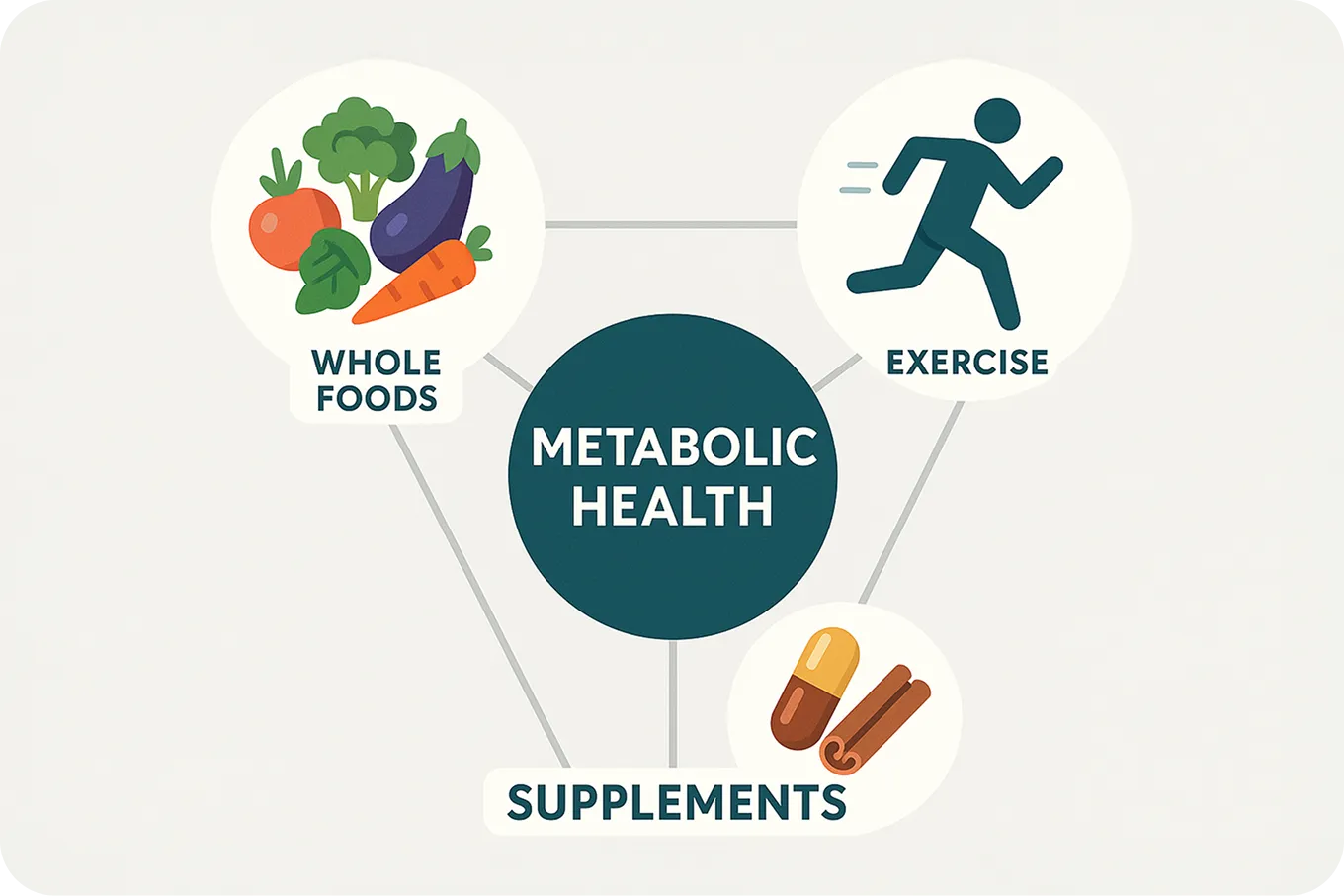
The foundation of metabolic health rests on three pillars: balanced nutrition, regular physical activity, and adequate recovery. Berberine and Ceylon cinnamon can amplify the benefits of these lifestyle factors, but they cannot replace them. Think of these supplements as performance enhancers for an already solid metabolic foundation rather than corrective measures for fundamental lifestyle issues.
A balanced diet rich in whole foods, lean proteins, healthy fats, and complex carbohydrates provides the nutritional foundation that allows berberine and Ceylon cinnamon to work most effectively. When your diet is already supporting stable blood sugar levels and providing essential nutrients, these supplements can help optimize your body’s natural metabolic processes rather than working overtime to compensate for nutritional deficiencies.
Regular physical activity enhances the effectiveness of both berberine and Ceylon cinnamon through multiple mechanisms. Exercise naturally activates many of the same pathways that berberine influences, including AMPK activation and improved insulin sensitivity. When combined with regular physical activity, berberine supplementation may provide additive benefits that support your fitness and metabolic goals.
Practical Usage Guidelines: Timing, Dosing, and Implementation

The reason for taking berberine with meals relates to both its absorption characteristics and its mechanism of action. Berberine has relatively poor bioavailability when taken on an empty stomach, and food helps improve its absorption. Additionally, taking berberine with meals allows it to work synergistically with your body’s natural post-meal metabolic processes.
Ceylon cinnamon can be incorporated in several ways. Many people prefer to take it as a standardized extract (typically 250-500mg daily) alongside their berberine doses. Alternatively, you can use Ceylon cinnamon powder (1-2 teaspoons daily) added to foods, beverages, or smoothies. The powder form provides additional fiber and a broader spectrum of compounds, while extracts offer more concentrated and standardized active ingredients.
A typical daily protocol might look like this: 300-500mg berberine with 250mg Ceylon cinnamon extract taken with breakfast, lunch, and dinner. This provides consistent coverage throughout the day and aligns with your body’s natural circadian rhythms of glucose and lipid metabolism.
For those new to berberine, starting with lower doses (300mg once or twice daily) and gradually increasing over 1-2 weeks can help minimize potential gastrointestinal side effects. Ceylon cinnamon is generally well-tolerated at recommended doses, but starting with smaller amounts allows you to assess your individual response.
Complementary Supplements and Stacking Strategies
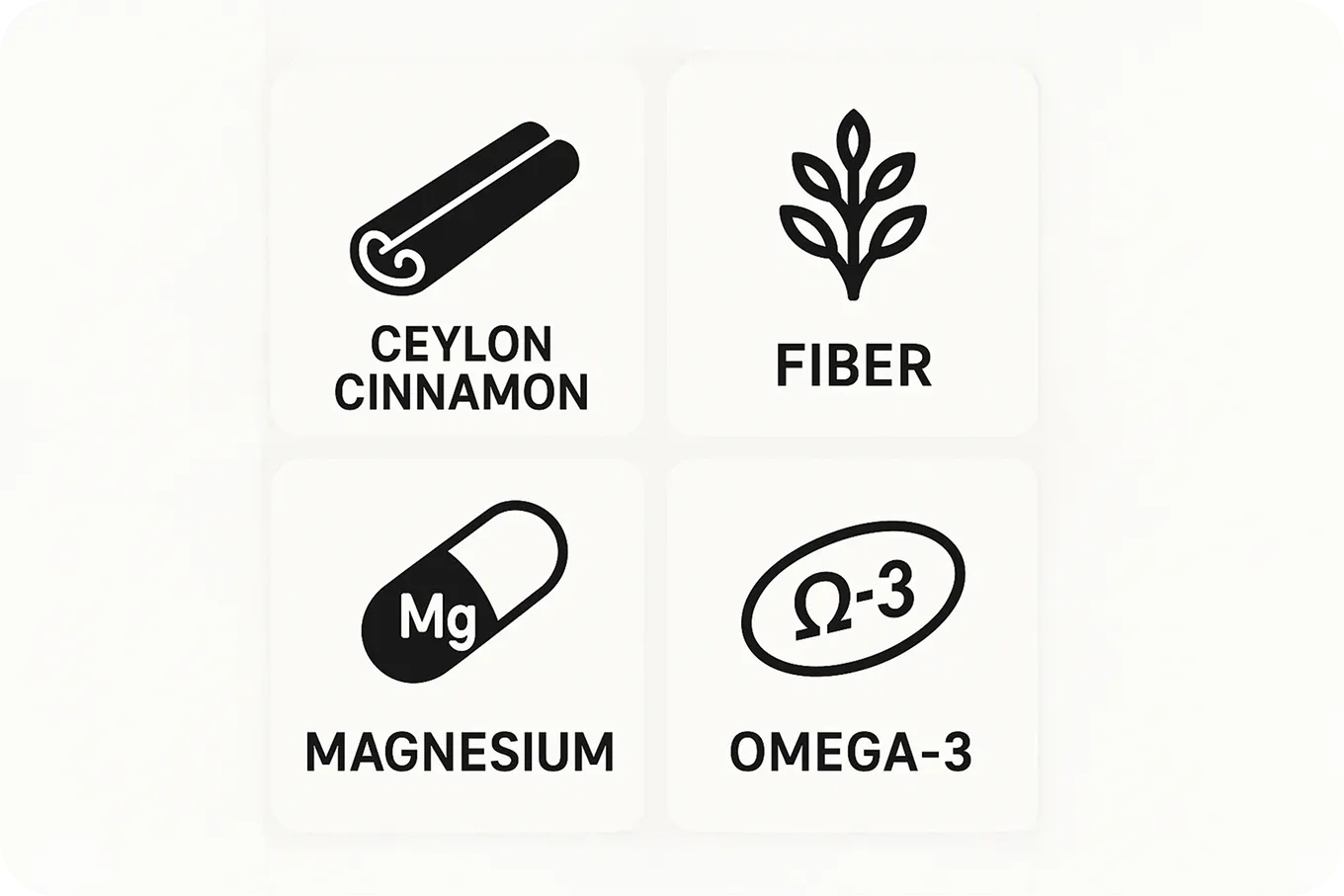
Chromium picolinate (200-400mcg daily) represents one of the most synergistic additions to a berberine-cinnamon combination. Chromium plays a crucial role in carbohydrate and lipid metabolism, and research suggests it may enhance insulin sensitivity through mechanisms that complement berberine’s AMPK activation. The picolinate form of chromium offers superior bioavailability compared to other forms.
Alpha-lipoic acid (ALA) is another compound that works exceptionally well with berberine and cinnamon. As both a water- and fat-soluble antioxidant, ALA can help protect cells from oxidative stress while also supporting healthy glucose metabolism. The typical dosing range for ALA is 300-600mg daily, preferably taken on an empty stomach for optimal absorption.
Magnesium glycinate (200-400mg daily) can provide additional metabolic support, as magnesium is involved in over 300 enzymatic reactions in the body, many of which relate to glucose and energy metabolism. The glycinate form is well-absorbed and less likely to cause digestive upset compared to other magnesium forms.
Omega-3 fatty acids from fish oil (1-2g EPA/DHA daily) can complement the metabolic benefits of berberine and cinnamon by supporting healthy inflammation responses and cellular membrane function. The anti-inflammatory effects of omega-3s may enhance the overall metabolic benefits of the berberine-cinnamon combination.
Quality Considerations: What to Look for in Products
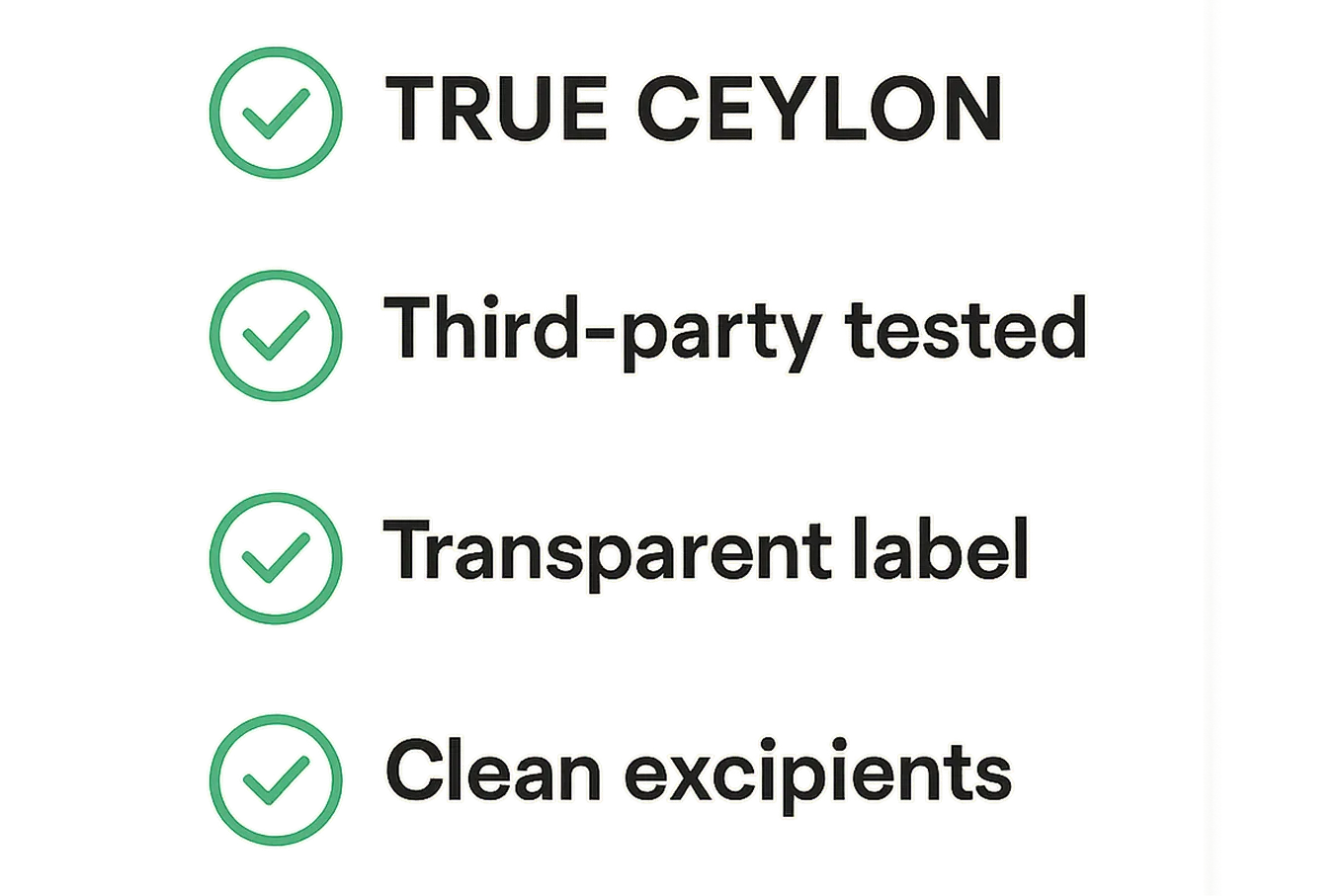
For berberine supplements, look for products that specify ‘berberine hydrochloride’ or ‘berberine HCl’ on the label, as this is the most stable and bioavailable form. The label should clearly state the amount of actual berberine per serving, not just the weight of a proprietary blend or plant extract. Reputable manufacturers will provide third-party testing results for purity and potency, often accessible through QR codes or websites listed on the product packaging. Ceylon cinnamon products should explicitly state ‘Ceylon cinnamon’ or ‘Cinnamomum verum’ on the label. Avoid products that simply say ‘cinnamon’ without specifying the variety, as these are likely to contain Cassia cinnamon. For standardized extracts, look for products that specify the concentration of active compounds, particularly cinnamaldehyde content.
Third-party testing is crucial for both ingredients. Look for certificates of analysis (COAs) that verify the product’s identity, purity, and potency. These documents should show testing for heavy metals, microbial contaminants, and residual solvents. Reputable manufacturers will make these COAs easily accessible to consumers.
Manufacturing standards also matter significantly. Look for products made in facilities that follow Good Manufacturing Practices (GMP) and are registered with the FDA. Some manufacturers go beyond basic requirements by obtaining additional certifications like NSF International or USP verification.
Potential Considerations and Individual Responses
While berberine and Ceylon cinnamon are generally well-tolerated by most people, individual responses can vary, and certain considerations should be kept in mind when starting this combination. Understanding these factors can help you optimize your experience and avoid potential issues.

Berberine’s most common side effects are gastrointestinal in nature, including mild stomach upset, diarrhea, or constipation. These effects are typically dose-dependent and often resolve as your body adapts to the supplement. Starting with lower doses (300mg once or twice daily) and gradually increasing can help minimize these issues. Taking berberine with food, as recommended for optimal absorption, also helps reduce gastrointestinal discomfort.
Some individuals may experience a temporary drop in blood pressure when first starting berberine, particularly if they’re already taking medications for blood pressure management. While this effect is generally mild and transient, it’s worth monitoring, especially during the first few weeks of supplementation.
Ceylon cinnamon is remarkably well-tolerated, with very few reported side effects at typical supplemental doses. However, individuals with known allergies to cinnamon or related spices should exercise caution and consider starting with very small amounts to assess tolerance.
It’s important to note that both berberine and cinnamon may interact with certain medications, particularly those used to manage blood sugar levels. If you’re taking any medications, especially for diabetes, blood pressure, or blood thinning, consult with your healthcare provider before starting this supplement combination.
Individual genetic variations can also influence how people respond to berberine and cinnamon. Some individuals may be more sensitive to these compounds and require lower doses, while others may need higher amounts to achieve desired effects. Starting conservatively and adjusting based on your individual response is the safest approach.
Long-term Sustainability and Cycling Considerations
One of the most frequently asked questions about berberine and Ceylon cinnamon supplementation concerns long-term use and whether cycling is necessary. Unlike some supplements that require periodic breaks to maintain effectiveness, both berberine and Ceylon cinnamon can generally be used continuously without significant concerns about tolerance or diminishing returns.
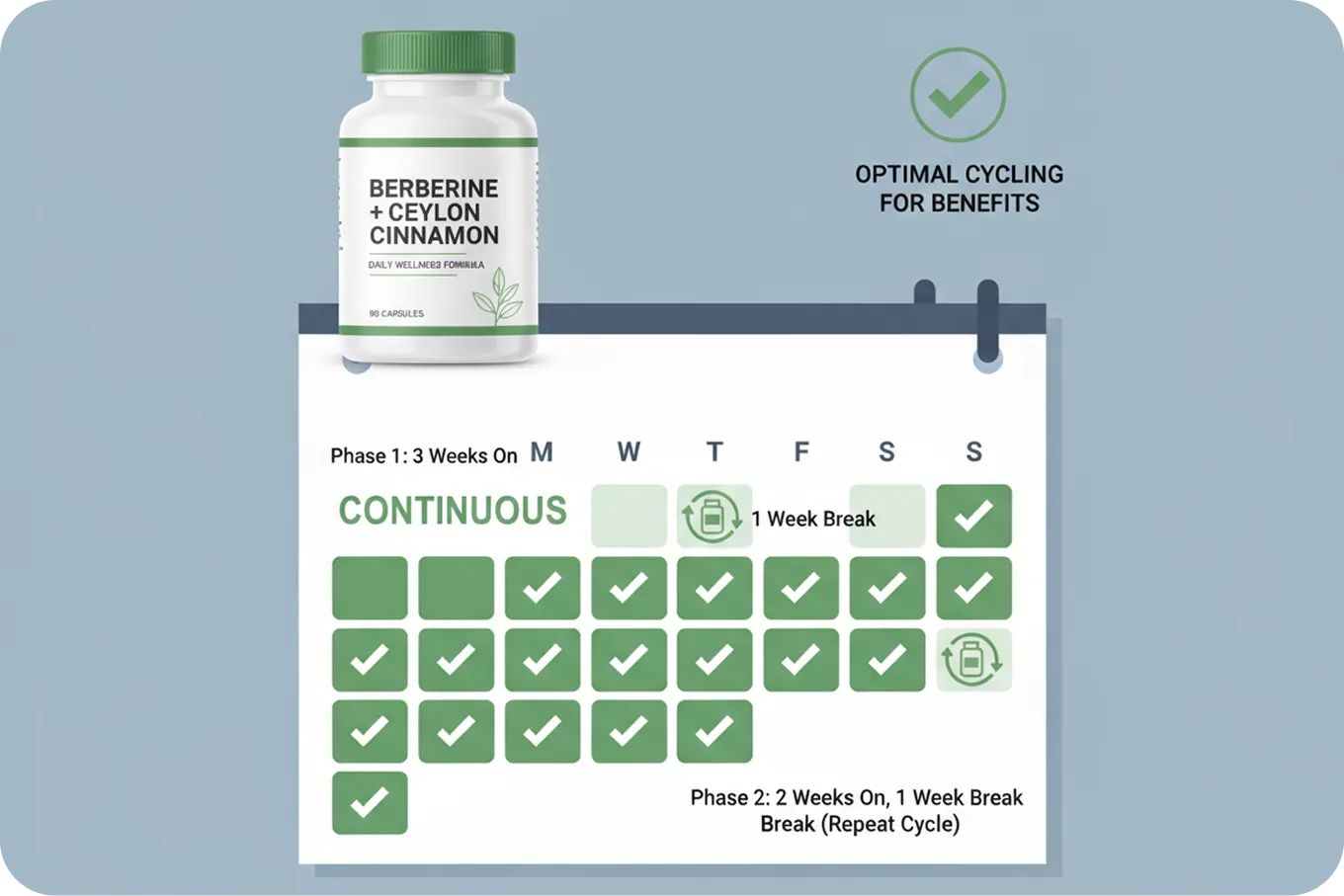
Research on berberine includes studies lasting several months to over a year, with participants maintaining benefits throughout the study periods without evidence of tolerance development. The compound’s mechanism of action through AMPK activation appears to remain consistent with continued use, suggesting that the body doesn’t adapt in ways that reduce its effectiveness.
Ceylon cinnamon, being a food-based supplement with a long history of culinary use, presents even fewer concerns about long-term supplementation. Many traditional cultures have consumed cinnamon daily for generations without adverse effects, and the low coumarin content of Ceylon cinnamon makes it suitable for ongoing use.
However, some practitioners recommend periodic assessment of your supplementation routine, not necessarily to cycle off the supplements, but to evaluate whether they’re still providing the desired benefits and whether any adjustments to dosing or timing might be beneficial. This might involve working with a healthcare provider to monitor relevant biomarkers or simply paying attention to how you feel and function with and without the supplements.
A reasonable approach for long-term use might involve taking the berberine-cinnamon combination consistently for 3-6 months, then taking a 2-4 week break to assess how you feel without them. This can help you determine whether the supplements are still providing meaningful benefits and whether you want to continue with the same protocol, adjust dosing, or make other modifications to your approach.
The key to long-term success with any supplement regimen is maintaining realistic expectations and understanding that supplements work best as part of a comprehensive approach to health that includes proper nutrition, regular exercise, adequate sleep, and stress management. Berberine and Ceylon cinnamon can be valuable tools in this approach, but they’re most effective when integrated into a lifestyle that supports overall metabolic health.
Disclaimer:
Top Rated Berberine Supplement
Berberine + Ceylon Cinnamon (1400mg formula)
9.8

- 1200 mg berberine equals 24,000 mg raw powder strength.
- Enhanced with Ceylon cinnamon extract for antioxidant and wellness support.
- Absorption boosted by MCT oil, Alpha-GPC, phosphatidylcholine blend.
- Promotes steady energy, focus, clarity without caffeine or stimulants.
- Manufactured in USA, purity tested, GMP-certified quality supplement.
Show more
- 1200 mg berberine equals 24,000 mg raw powder strength.
- Enhanced with Ceylon cinnamon extract for antioxidant and wellness support.
- Absorption boosted by MCT oil, Alpha-GPC, phosphatidylcholine blend.
- Promotes steady energy, focus, clarity without caffeine or stimulants.
- Manufactured in USA, purity tested, GMP-certified quality supplement.
Picked by ... people today
